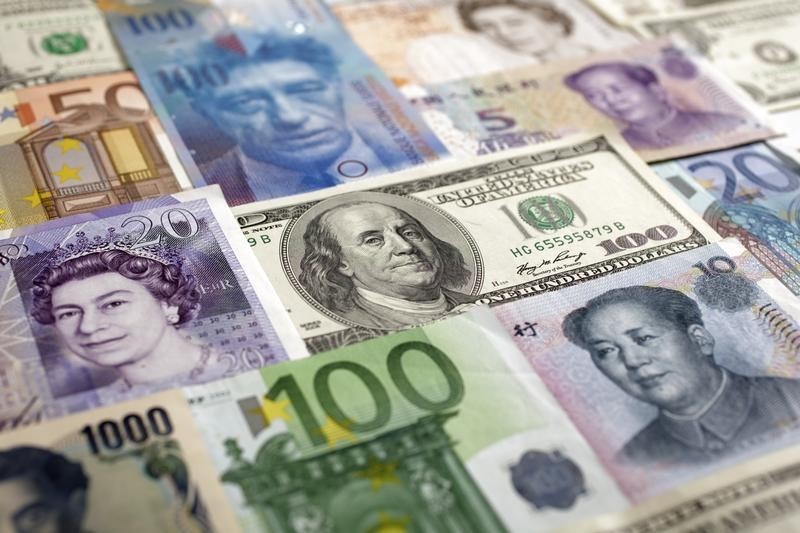By Wayne Cole
SYDNEY, Nov 22 (Reuters) - The Australian and New Zealand dollars were left to languish on Friday with investors frazzled by a week full of conflicting headlines on the Sino-U.S. trade dispute, while bonds were content to sit on their recent hefty gains.
The Aussie was pinned at $0.6786 AUD=D3 having lost 0.5% for the week so far. That was back from a $0.6835 top early in the week, which now stands as chart resistance, with support at the November trough of $0.6770 the next target.
The kiwi dollar has fared better to be a fraction firmer for the week at $0.6404 NZD=D3 , though it failed to clear resistance at $0.6437 and, more importantly, the November top at $0.6466. Support comes in at $0.6382 and $0.6323.
The kiwi has been aided by buying against its Australian counterpart, with the Aussie down 0.4% for the week at NZ$1.0604 AUDNZD= after touching a three-month low at $1.0576.
The Aussie has been pressured by a diverging outlook for domestic interest rates with market wagering the Reserve Bank of Australia (RBA) is much more likely to ease again than its New Zealand counterpart.
The RBA came much closer to cutting this month than first thought, while the Reserve Bank of New Zealand (RBNZ) surprised many by skipping on an easing, triggering a mass rout out of kiwi short positions.
Markets now imply around a 20% chance 0#YIB: the RBA will ease by a quarter point to 0.5% at its Dec. 3 meeting, rising to 66% by February and almost 100% by May.
The next RBNZ meeting is not until Feb. 12 and the market implies a probability of around 31% for a cut to 0.75%, rising to 50% by May RBNZWATCH .
The shift has seen Australian bond yields fall further and faster than those in New Zealand, so that 10-year Aussie yields AU10YT=RR now pay 27 basis points less compared to just 11 basis points early this month.
Australian three-year bond futures YTTc1 have climbed 19 ticks in 10 sessions to reach 99.260. The 10-year yields stood at 1.10% on Friday, having fallen 24 basis points in the same period.
Ben Udy, an economist at Capital Economics, thinks yields could drop as far as 0.50% by the end of next year should the RBA be forced to launch quantitative easing as many now suspect.
RBA Governor Philip Lowe will give a speech on the offshore experience of QE next week, which should offer clues to what steps it might consider including buying bonds.
"We think that rising unemployment, sluggish growth and easing inflation will force the RBA to cut rates to 0.25% by the middle of next year," said Udy.
"What's more, we expect the RBA to cross the Rubicon and launch quantitative easing, adding to downward pressure on bond yields."
As a result, Capital saw the Aussie falling to $0.6500 by the end of 2020, and the kiwi reaching $0.6000. (Editing by Shri Navaratnam)
